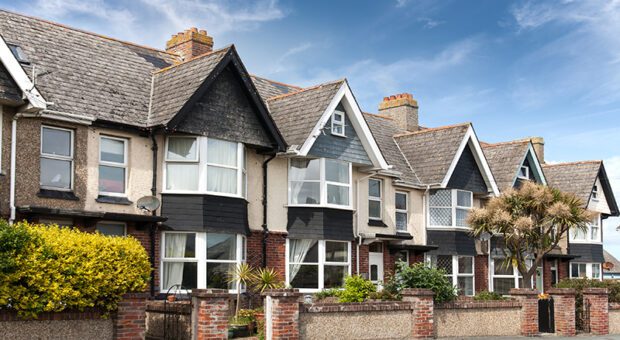- Personal Injury Claims
- Accidents
- Road Traffic Accident Claims
- Accidents At Work Claims
- Holiday Accidents and Illnesses Abroad Claims
- Fatal Accident Claims
- Accidents Public Place Claims
- Injuries
- Eye Injury Compensation Claims
- Poisoning Claims
- Serious Injury Claims
- Sports Injury Claims
- Upper Body Injuries Claims
- Arm and Elbow Injury Compensation Claims
- Hand Injury Claims
- Chest Injury Compensation Claims
- Neck Injury Compensation Claims
- Collarbone Injury Compensation Claims
- Cheekbone Injury Compensation Claims
- Eye Injury Claims
- Shoulder Injury Claims
- Fractured Sternum Compensation Claims
- Spinal Injuries Claims
- Brain Injury Compensation Solicitors
- Compensation for Scarring Claims
- Dislocated Injury Compensation
- Amputation Claims
- Dental Claims
- Horse Riding Accident Compensation
- Personal Injury Lower Body Injuries
- Asbestos Lawyers
- Abuse Lawyers
- Other Injury Claims
- Disputes
- Alternative Dispute Resolution
- General Disputes
- Litigation
- Defamation
- Litigation Funding
- Other Dispute Resolution Services
- Court Actions
- Professional Negligence
- Professional Negligence Claims Against Surveyors
- Professional Negligence Claims Against Architects
- Professional Negligence Claims Against Accountants
- Professional Negligence Claims Against Solicitors
- Professional Negligence Claims Against Financial Advisers IFAS
- Professional Negligence Claims Against Banks
- Clinical Negligence Claims
- Group Actions
- Property & Conveyancing
- Conveyancing Services – Scotland
- Commercial Property Services – Scotland
- Other Property Services Scotland
-
- Family Law
- Immigration Services
- Visas
- Adult Naturalisation Application
- Child Registration Application
- Private Life Application for Adults
- Private Life Application for Children
- Long Residence Application
- Surinder Singh
- Administrative Review
- Fresh Claims for Asylum
- Naturalisation Application
- Stateless Persons
- Travel Documents
- Pre Action Protocol Letter
- Judicial Review
- Immigration Application Review
- Brexit Immigration Advice: Services in Scotland
- Business Immigration
-
- Wills,Trusts & Estates
- Probate & Executry Services
- Business Services
- Careers
What is the Difference Between “Residential Property” and “Non-Residential Property”, and Why Does it Matter?
August 26, 2019 Commercial Conveyancing,Residential Conveyancing
” is not something often asked during the course of a prospective purchase as in the vast majority of circumstances the answer to that question is obvious. However, recent case law has emerged to demonstrate that the distinction between residential and non-residential property is both significant, and not always clear. This article will highlight why this distinction is so important, explain how residential and non-residential property are defined, before considering areas of uncertainty surrounding this distinction.
Until the turn of the century, there were very few differences in terms of practical implications for those who bought residential property and those who bought commercial property (officially referred to as “non-residential” property). As a result of this, there was little need for legislation and case law to provide a clear approach for determining whether a property is regarded as a residential or not. However, with the implementation and evolution of non-residential rates of Stamp Duty Land Tax and, since the establishment of Land and Buildings Transaction tax (LBTT) (including the recent changes the government has made to the rates of LBTT to be paid on the purchase of non-residential property compared to residential property), this distinction has become profound.
For example, under the current rates, if a non-residential property is bought for over £750,000, the portion of the price paid which exceeds £750,000 will be taxed at 5%. If that same property is classified as residential, however, the portion of the price which exceeds £750,000 will be taxed at 12%. Furthermore, due to the extra tax which may be due as a result of the Additional Dwelling Supplement (the rate for which increased in January 2019 from 3% to 4% of the entire price paid), if the residential property being purchased is not the buyer’s only residential property, there may be additional tax payable.
There is an obvious benefit for those who can prove the property they have bought is non-residential in terms of owing significantly less tax, making the distinction between residential and non-residential property increasingly important.
Legislation defines residential property as property that is being used as, is suitable for being used as, or is being developed to be used as, a dwelling. This is almost identical to the definition in England. This obviously encompasses houses and flats, but also includes accommodation for school pupils, members of the army, and holiday homes. However, frustratingly there is no definition as to what a “dwelling”, or what “suitable for use as a dwelling”, is.
Non-residential property is predictably any property which is not residential, such as empty plots of land, offices, shops and factories. For the avoidance of doubt, buildings such as hospitals, prisons and hotels are also considered non-residential. Most Bed and Breakfast properties have also typically been treated as non-residential, providing they are available for guests to use all year round, but given the emergence of new types of temporary accommodation such as Airbnb, it is unclear whether this will also qualify for the non-residential LBTT rate.
An interesting caveat to the residential property definition is that if more than five residential properties are purchased in the same transaction, for LBTT purposes the purchase of the portfolio will be treated as a non-residential transaction with the non-residential rates applying.
It is important to note that the point in time the courts will look at to determine if the property is residential for the purposes of LBTT is the date the transaction was concluded. The courts will usually have little to no regard for any former use of the property, or how the purchaser intends to use the property in the future. This means that if a company buys residential property with the intention of stripping it and converting it into a commercial premise, then unless the relevant developments have been completed prior to the date of the transaction, the LBTT rate for residential property will still apply. Conversely, if non-residential property is purchased with the intention of developing it into housing, the non-residential LBTT rate would apply. However, it is important to note that as per the definition of residential property given above, if development on the property to make it residential has already begun, then it would be classified as residential.
Earlier this year, a case was raised in England with the key issue being whether or not the purchase of a property by a company was to be subjected to the residential tax rate, or the much lower non-residential tax rate. The tax authorities argued that because the property was a bungalow which had once been used as a home, the residential rate applied.
The tribunal ultimately disagreed with the tax authorities. They found that in order for it to be regarded as suitable for use as a dwelling, the property needed to have the necessary facilities. The bungalow was in a terrible condition. It had no heating system, it had no water pipes installed, and most importantly, it was riddled with asbestos. Therefore, the tribunal felt that the condition of the property when it was bought was unsuitable to be used as a dwelling, and that even though it was clearly possible to restore the building to a state where it could be used as such, it classified the property as non-residential.
It is important to note that this case is an English law case, and so the Scottish courts and tribunals may well take a different view. However, given the similarities between English and Scots law on this specific topic, and that the decision would align with Scottish government policy (by not penalising developers buying derelict buildings and converting them into suitable housing), one would expect the Scottish courts and tribunals to reach a similar decision.
However, this case has highlighted a number of other important questions that don’t yet have an answer. Does the presence of asbestos in a building automatically classify it as non-residential? Could a seller temporarily remove the heating system or the water pipes in order to attract buyers by allowing them to buy the property at the non-residential LBTT rate? What other conditions would make a property unsuitable as a dwelling?
It is clear that the distinction between and is becoming increasingly important in terms of costs to the purchaser. It is also clear that what qualifies as residential property, and what does not, is not as obvious as once thought. Whilst some of the main differences have been noted in this article, and whilst the recent case clarified that an unusable residential property is not a residential property, the law still has a long way to go to comprehensively confirm the circumstances in which a property is and is not residential.
Contact Us
Speak to one of our experience legal team, and get responsive, clear, and straightforward legal advice and support.
















